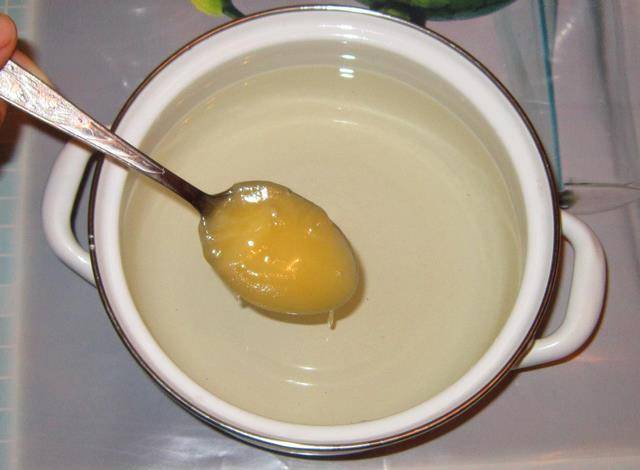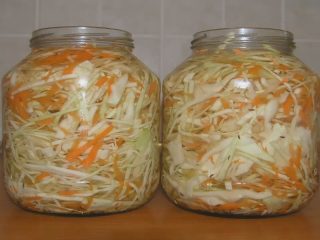With the onset of autumn, a particularly hot time for preparing preparations for the winter begins. Indeed, at this time, many vegetables and fruits ripen in large quantities and can be bought for almost nothing, while after a month or two the prices for the same products will be very high. Sauerkraut is usually one of the last to be prepared for the winter - after all, its early varieties are not very tasty when pickled. And middle and late varieties become the most delicious after the first small frosts.
Each housewife, as a rule, has her own favorite and most reliable recipe for fermenting white cabbage. But there is a way to ferment cabbage that will interest anyone who loves tasty and healthy foods - sauerkraut with honey. Indeed, in recipes where natural honey is used as an additive for fermentation, two of the healthiest products are combined together, and if you have the opportunity, be sure to try to prepare this dish, which is incredibly refined in taste, attractive in appearance and healthy in its properties. In addition, it can be stored longer under normal conditions, because the antiseptic properties inherent in honey make it an excellent preservative.
Classic recipe
This recipe does not stand out as something particularly new; rather, it can be called ancient, since it was used to ferment cabbage more than a century ago.The composition of the ingredients for making sauerkraut according to this recipe is very simple.
- White cabbage - a large fork, weighing about 3 kg;
- Carrots - two medium or one large root vegetable;
- 3 level dessert spoons of coarse salt;
- Honey, preferably dark-colored late varieties - 2 tablespoons;
- 5 black peppercorns.
All dirty and spoiled outer leaves are removed from the cabbage fork and then washed well in running water. Then the forks are cut into several parts so that it is more convenient to chop each part into strips using a knife or a special grater.
The carrots are washed, peeled and grated on a coarse grater. Chopped vegetables are mixed in an enamel or glass container, salt and pepper are added, mixed and kneaded well.
Then a clean, heavy oppression is placed on top and left in a room with a temperature of about +18°C +20°C for 48 hours. At elevated temperatures, the fermentation process goes faster, but the taste of cabbage deteriorates, and if the temperature is much lower, the process slows down, lactic acid is released in insufficient quantities and the cabbage may taste bitter.
It is necessary to pierce the workpiece daily with a long sharp stick so that the gases that accumulate during fermentation can freely escape from it. Foam that appears on the surface must also be removed periodically - harmful bacteria can accumulate in it.
After 48 hours, part of the brine is poured into a mug, mixed with honey, and the cabbage is poured with this sweet solution again.
After another two days according to the prescription sauerkraut must ferment. Among many recipes for fermenting cabbage, it is with this method that the fermentation process takes the longest, but the taste of the product, as a rule, is more intense. A sign of the end of the fermentation process will be the transparency of the brine and the cessation of the appearance of air bubbles on the surface of the cabbage. Now the cabbage can be moved to a cold place. The ideal temperature for storing it is from +2°C to +6°C.
Brine sourdough method
The previous recipe is great for fermenting juicy varieties of white cabbage, which themselves release a lot of liquid during fermentation. But cabbage can be different and it is not always possible to determine how it will behave during the fermentation process. Therefore, there is another method of sourdough, using which you are guaranteed to get tasty and crispy sauerkraut.
You can use the same ingredients as in the previous recipe, but only pure spring water is added to them. You can use water that has been passed through a good filter or boiled.
After chopping the vegetables, boil water and dissolve salt in it. For one and a half liters of water according to the recipe, you will need about 3 dessert spoons of salt. Then cool the resulting brine to a temperature no higher than +40°C. And only then dissolve 2 tablespoons of honey in it.
All recipes using honey include this basic requirement, even if they do not explicitly state it.
It is advisable to sterilize glass jars before placing a mixture of chopped cabbage and carrots in them. The vegetables are placed very tightly and lightly pressed down on top with a spoon. After the vegetables are placed almost to the very neck of the jar, the jar is filled with honey-salt brine and placed in a moderately warm place. It is necessary that the brine covers all the vegetables completely.
Since during the fermentation process some of the brine will rise up and go outside the jar, it is better to put it in some kind of tray. Already 8-10 hours after the start of fermentation, it is advisable to release excess gases from the workpiece by piercing it with a sharp fork or knife.
Cabbage prepared according to this recipe can be tasted within a day after preparation, although it will acquire its final taste only after 2-3 days. It should be stored, like any sauerkraut, in a cool or even cold place.
Spicy cabbage
If you want to experiment with the flavors of sauerkraut, try this recipe. All main ingredients are taken in the same quantities as for the classic version. Cabbage and carrots are cut in a way convenient for you. But when making brine, in addition to salt, half a teaspoon of anise, dill seeds and caraway seeds are added to boiling water. The brine, as usual, is cooled and honey is thoroughly dissolved in it.
Further, everything happens in the traditional way.Cooked vegetables are poured with brine with spices and honey and placed in a conditionally warm place. As usual, the cabbage can be considered ready and transferred to the cold when gas bubbles stop being released and the brine becomes lighter in color.
To give sauerkraut additional flavor nuances, you can also use chopped apples, sweet peppers, beets, grapes and cranberries. Try different options and surprise your family with the varied tastes of such a traditional preparation for everyone.















